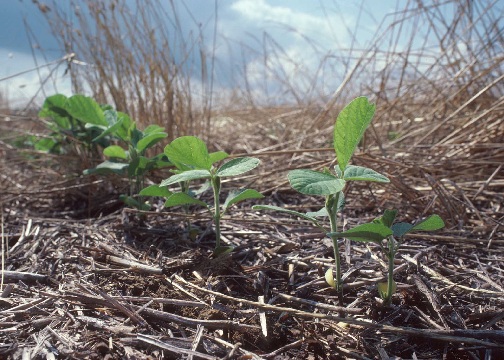Competency Area 5: Soil conservation AEM
PO 49. Describe the basic components and workings of tillage systems, and understand their agronomic and environmental benefits.
- Plow-till
- No-till
- Mulch-till
- Ridge-till
- Zone tillage
Plow-till.
Typically consists of primary tillage with a moldboard plow, followed by one or more passes with a disk and another type of harrow. The moldboard plow is the best weed controlling tillage tool. It also thoroughly inverts the soil, incorporating and covering residue, fertilizer or manure. Thus, it reduces ammonia volatilization if performed immediately after manure or urea application, and it reduces odor nuisance. However, the plow-till system is one of the more soil degrading tillage practices because of its aggressive disturbance and reduction of mulch cover. This system uses the most fossil fuel for field operations and takes the most labor.
No-till.
No tillage is done, crops are planted with a no-till planter or drill, and weeds are controlled without tillage. Manures and fertilizers are applied to the soil surface or may be injected with low-disturbance injectors. If left at the surface, ammonia volatilization and odor are a concern. No-tillage systems conserve soil and build soil organic matter. They also have a beneficial effect on soil organisms. Fossil fuel use for field operations is low as well as labor needs. Odor from manure, planting issues through heavy residue, and weed control are the greatest challenges with this system. Even crop residue spread at harvest is extremely critical for success with no-tillage.

Soybeans growing in a no-till field
Photo courtesy of NRCS
Quick Links
- Competency Area 1: Basic soil properties
- Competency Area 2: Soil hydrology AEM
- Competency Area 3: Drainage and irrigation AEM
- Competency Area 4: Soil health and compaction
- Competency Area 5: Soil conservation AEM
- Competency Area 6: Watershed hydrology AEM
- Competency Area 7: Non-point source pollution AEM
- Competency Area 8: Concentrated source pollution AEM
- Competency Area 9: Conservation planning AEM
